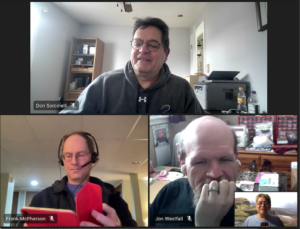
This podcast’s discussion may sound a bit unusual. There’s a reason for that. We’ve been using Adobe Podcast Studio “beta” since late last summer. In general, it has worked pretty well although we’ve encountered a few bugs along the way. However, we ran into a really unusual error recording this podcast. The panel consisted of me (Todd Ogasawara), co-host Dr. Jon Westfall, and guest panelists Frank McPherson and Don Sorcinelli. However, for some as yet unknown reason, Don’s audio track was not uploaded. Fortunately, Adobe let me know about an undocumented debugging tool that let met salvage the remaining tracks. I brought these tracks into Audacity and deleted the silent sections which should have contained Don’s contribution to the discussion.
With that explanation out of the way, this is what we discussed in this podcast.
- Daylight Savings
- Frank’s Android phone experiences since the G1 was released in October 2008
- Advice for young aspiring technologiists
- New MacBooks but no new iPads (yet)?
- iOS 17.4’s podcast transcription
- Todd’s recent fav gadget: A smart air compressor/tire inflator
- DisplayLink drivers
- Jon started using AI to illustrate his years of “Bad Joke Saturdays” jokes
Available via Google Music Podcasts and Apple iTunes.
MobileViews YouTube Podcasts channel
MobileViews Podcast on Audible.com





